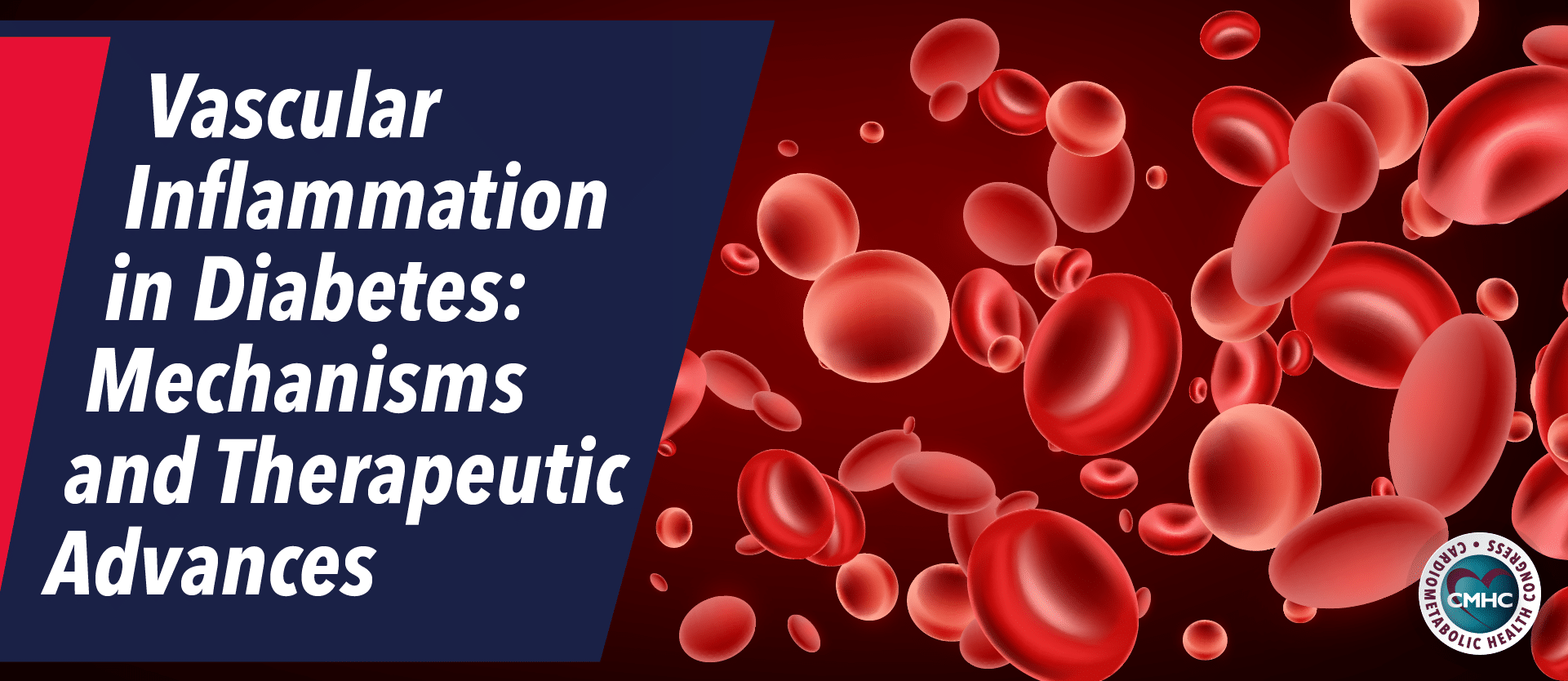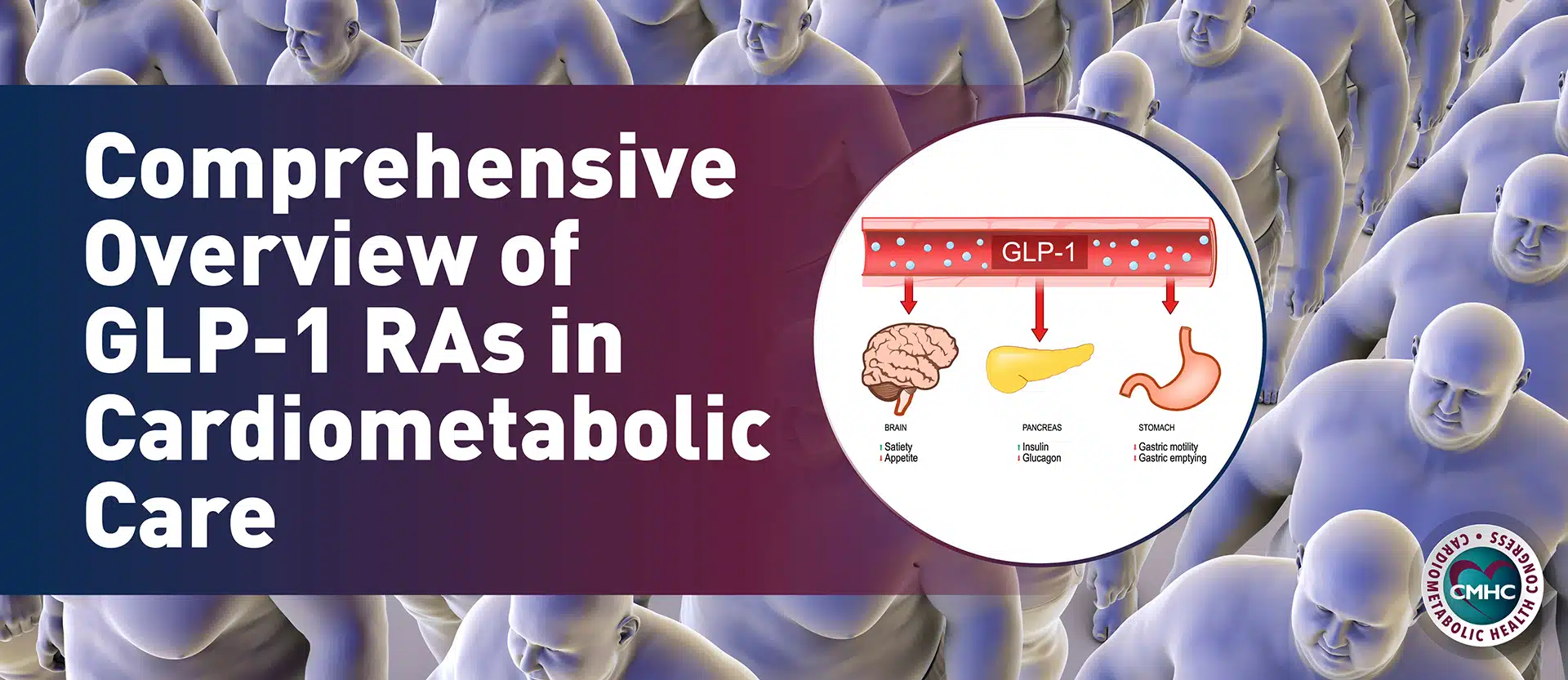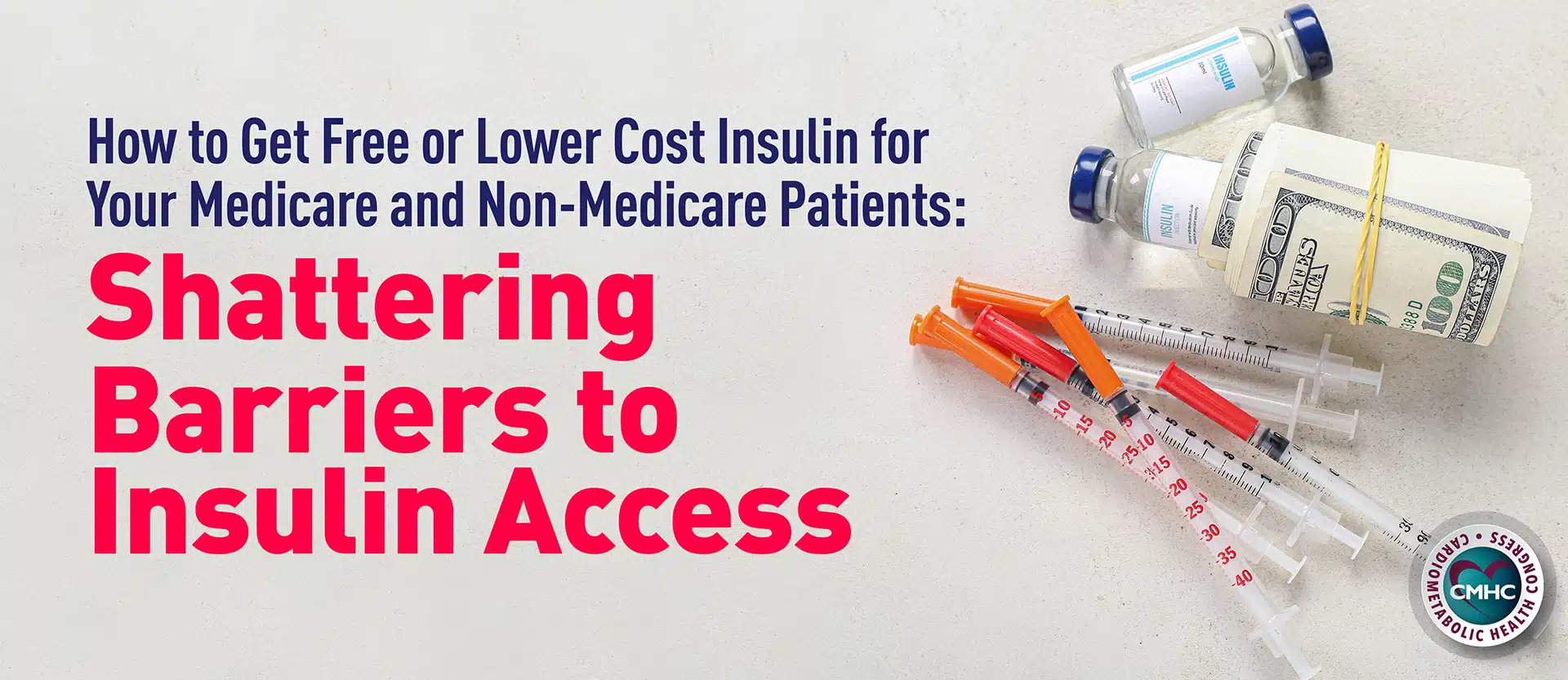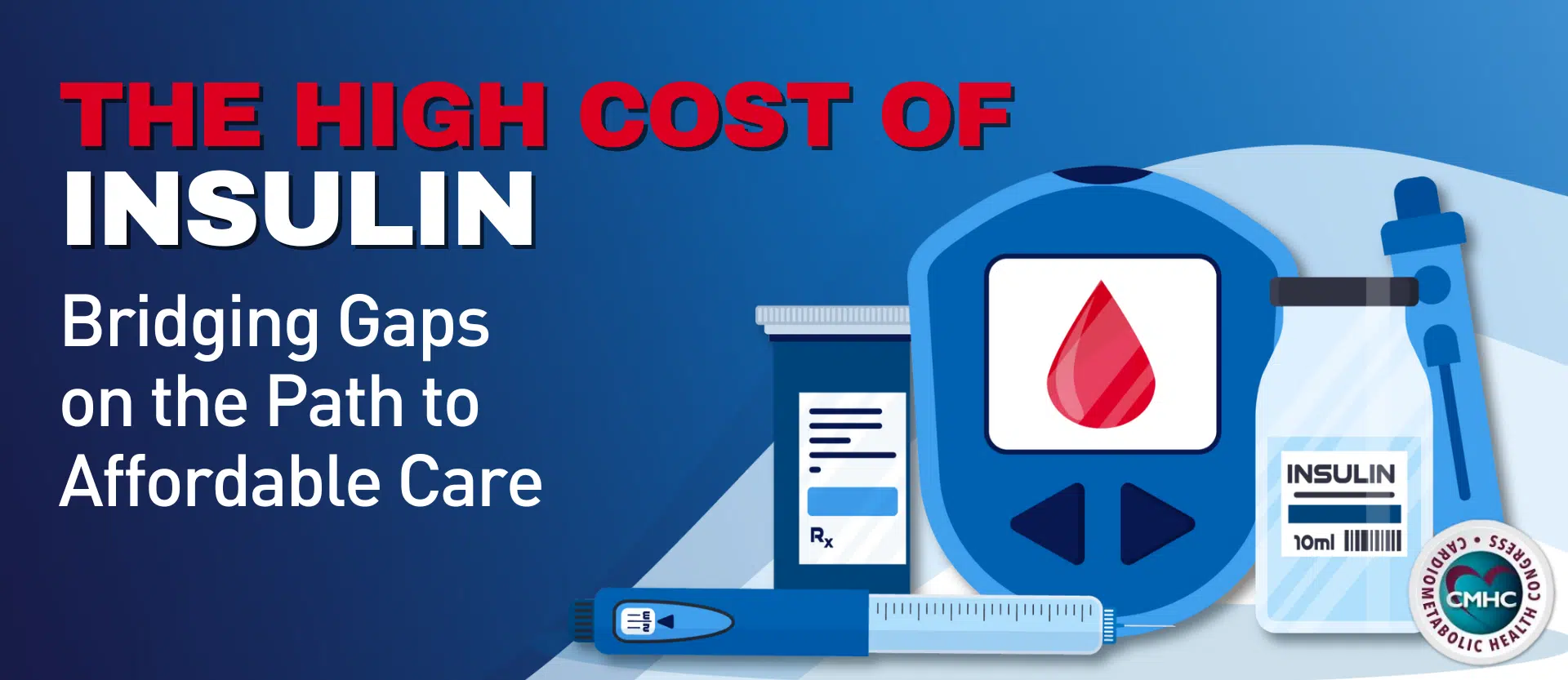Vascular Inflammation in Diabetes: Mechanisms and Therapeutic Advances
Atherothrombosis, characterized by arterial plaque buildup with superimposed thrombus formation, involves multiple pathologic processes, including dyslipidemia, endothelial dysfunction, inflammation, and likely other unknown contributors. Clinical manifestations of atherothrombosis include coronary artery disease (CAD), peripheral artery disease (PAD), myocardial infarction (MI), and stroke, which are among the leading causes of mortality in the US.
Diabetes further increases the risk of atherothrombotic events and may worsen the prognosis of CAD or PAD. Patients with diabetes remain in a chronic prothrombotic state and often have comorbidities that may set the stage for a thrombotic event, e.g., hyperglycemia, insulin resistance or insulin deficiency, inflammation, obesity, and dyslipidemia.
Mechanisms of Inflammation in Diabetes
Inflammation is involved in all stages of the atherothrombotic process (i.e., the formation, progression, and rupture of atherosclerotic plaques) and results in acute coronary events. Endothelial dysfunction is one of the key features of inflammation. Endothelial tissue forms the inner cell lining of blood vessels and lymphatics in the body. One of its many functions is to maintain vascular homeostasis by generating vasodilators and vasoconstrictors (e.g., nitric oxide (NO), endothelin, etc.) (1)
Endothelial dysfunction disrupts vascular homeostasis, leading to reduced vasodilation and a proinflammatory, prothrombic state. This increased inflammation is often associated with coronary heart disease (CHD), peripheral vascular disease, heart failure, and hypertension. Importantly, the balance of NO with various vasodilators is vital for maintaining vascular homeostasis. Any disruption in this balance can stimulate inflammatory cells and trigger an influx of low-density lipoprotein (LDL) from the vessel lumen into the wall. Aggregated foam cells form fatty tissue—an early sign of atherosclerosis—and an inflammatory chain reaction ensues where collagen deposits form atherosclerotic plaques in the healthy vessel. These plaques expose a prothrombic core when they rupture, activating coagulation and forming a vascular clot (2, 3).
Diabetic conditions like hyperglycemia and insulin resistance trigger vascular pathogenesis in different ways. Insulin resistance may lead to decreased NO production. Given that NO is a major player in maintaining vascular tonicity, its reduced bioavailability is a key determinant of endothelial dysfunction. Increased vasoconstrictor production (e.g., endothelin-1) has been linked to microangiopathy in type 2 diabetes (2-4). Insulin resistance is further associated with an increase in fibrinogen, which reduces the tissue plasminogen activator that’s responsible for the breakdown of clots. Hyperglycemia, on the other hand, induces the glycation of fibrinogen and plasminogen, which form resistant fibrin networks and compromise plasmin activity, respectively. Hyperglycemia can also trigger vascular inflammation by activating protein kinase C and NF-ᴋβ; the exposure of adhesive cells during endothelial dysfunction further exacerbates inflammation. Together, these underlying mechanisms contribute to chronic low-grade inflammation in people with diabetes.
Targeting Inflammation to Reduce Atherothrombotic Risk
Treating hyperglycemia and insulin resistance is the first step to reduce atherothrombotic risk. Medications like pioglitazone, part of the thiazolidinedione (TZDs) class, improve endothelial function by modulating insulin resistance. There is ongoing work to develop drugs that can directly target diabetes-related genes as well (5-7).
There are also several treatments that directly target inflammatory and thrombotic pathways. Statin therapy has proven beneficial in reducing inflammation and atherosclerosis in diabetic patients (8). Other established therapies include angiotensin-converting enzyme (ACE) inhibitors (which dilate blood vessels by decreasing production of angiotensin II), and calcium channel blockers (vasodilators that treat endothelial dysfunction) (3). Several ongoing studies are being conducted to assess the safety and efficacy of additional agents that target atherosclerosis. NO-stimulating agents are one class of drugs being investigated.
Although antiplatelet agents may help prevent thrombotic events, there is conflicting evidence about the appropriate antiplatelet strategies in patients with diabetes given the hyperreactivity of platelets associated with the diabetic state (9). There is also conflicting evidence whether antiplatelet therapy, specifically dual antiplatelet therapy (DAPT), should be used in primary prevention of CV events in patients with diabetes (10). Current diabetes practice guidelines by the American Diabetes Association recommend aspirin therapy (or clopidogrel if allergic to aspirin) for secondary prevention, DAPT (low-dose aspirin + a P2Y12 inhibitor) 1-year post-ACS (with benefits possible even beyond this period), and aspirin therapy for primary prevention (11). However, recurrent adverse events often occur in these patients despite being on therapy (9). Therefore, more aggressive antithrombotic therapies may be necessary to prevent secondary thrombotic events (9). The effect of more potent antiplatelet agents, such as ticagrelor, have not been confirmed in high-risk patients with diabetes (12). The ongoing THEMIS trial (ClinicalTrials.gov, NCT019911795) is evaluating ticagrelor for the prevention of CV death, MI, or stroke in type 2 diabetes patients with CAD (but no prior MI or stroke) who are at high risk for atherothrombotic events (12).
In a recent trial targeting the pro-inflammatory cascade (CANTOS), the IL-1 inhibitor canakinumab decreased the risk of cardiovascular events compared with placebo, but there was no observable difference in overall mortality. There was an increase in fatal infections, highlighting one of the challenges in targeting immune pathways for chronic disease. Canakinumab also did not reduce the incidence of diabetes (despite a strong reduction in inflammatory markers), further illustrating the complex relationship between inflammation and diabetes (13) .
Patients with diabetes are predisposed to vascular disease, with inflammation and thrombotic events being a major driver. Timely diagnosis and treatment are essential to reduce atherothrombotic disease in patients with diabetes. More research is also needed to develop antithrombotic interventions that specifically target diabetes.
References:
- Rajendran P, Rengarajan T, Thangavel J, Nishigaki Y, Sakthisekaran D, Sethi G, et al. The vascular endothelium and human diseases. International journal of biological sciences. 2013;9(10):1057.
- Paneni F, Beckman JA, Creager MA, Cosentino F. Diabetes and vascular disease: pathophysiology, clinical consequences, and medical therapy: part I. Eur Heart J. 2013;34(31):2436-43.
- Pechlivani N, Ajjan RA. Thrombosis and vascular inflammation in diabetes: mechanisms and potential therapeutic targets. Frontiers in cardiovascular medicine. 2018;5:1.
- Kalani M. The importance of endothelin-1 for microvascular dysfunction in diabetes. Vascular health and risk management. 2008;4(5):1061.
- Schäfer A, Fraccarollo D, Pförtsch S, Flierl U, Vogt C, Pfrang J, et al. Improvement of vascular function by acute and chronic treatment with the PDE‐5 inhibitor sildenafil in experimental diabetes mellitus. British journal of pharmacology. 2008;153(5):886-93.
- Cheang WS, Wong WT, Tian XY, Yang Q, Lee HK, He G-W, et al. Endothelial nitric oxide synthase enhancer reduces oxidative stress and restores endothelial function in db/db mice. Cardiovascular research. 2011;92(2):267-75.
- Yang Q, Xue HM, Wong WT, Tian XY, Huang Y, Tsui SK, et al. AVE3085, an enhancer of endothelial nitric oxide synthase, restores endothelial function and reduces blood pressure in spontaneously hypertensive rats. British journal of pharmacology. 2011;163(5):1078-85.
- Schönbeck U, Libby P. Inflammation, immunity, and HMG-CoA reductase inhibitors: statins as antiinflammatory agents? Circulation. 2004;109(21_suppl_1):II-18-II-26.
- Patti G, Cavallari I, Andreotti F, Calabro P, Cirillo P, Denas G, et al. Prevention of atherothrombotic events in patients with diabetes mellitus: from antithrombotic therapies to new-generation glucose-lowering drugs. Nat Rev Cardiol. 2019;16(2):113-30.
- Held P, Himmelmann A, Ditmarsch M. Ticagrelor for the treatment of atherosclerotic disease: insights from the PARTHENON clinical development program. Future Cardiol. 2016;12(4):405-18.
- Association AD. 10. Cardiovascular disease and risk management: standards of medical care in diabetes—2019. Diabetes Care. 2019;42(Supplement 1):S103-S23.
- Bhatt DL, Fox K, Harrington RA, Leiter LA, Mehta SR, Simon T, et al. Rationale, design and baseline characteristics of the effect of ticagrelor on health outcomes in diabetes mellitus patients Intervention study. Clinical cardiology. 2019;42(5):498-505.
- Everett BM, Donath MY, Pradhan AD, Thuren T, Pais P, Nicolau JC, et al. Anti-Inflammatory Therapy With Canakinumab for the Prevention and Management of Diabetes. J Am Coll Cardiol. 2018;71(21):2392-401.


















